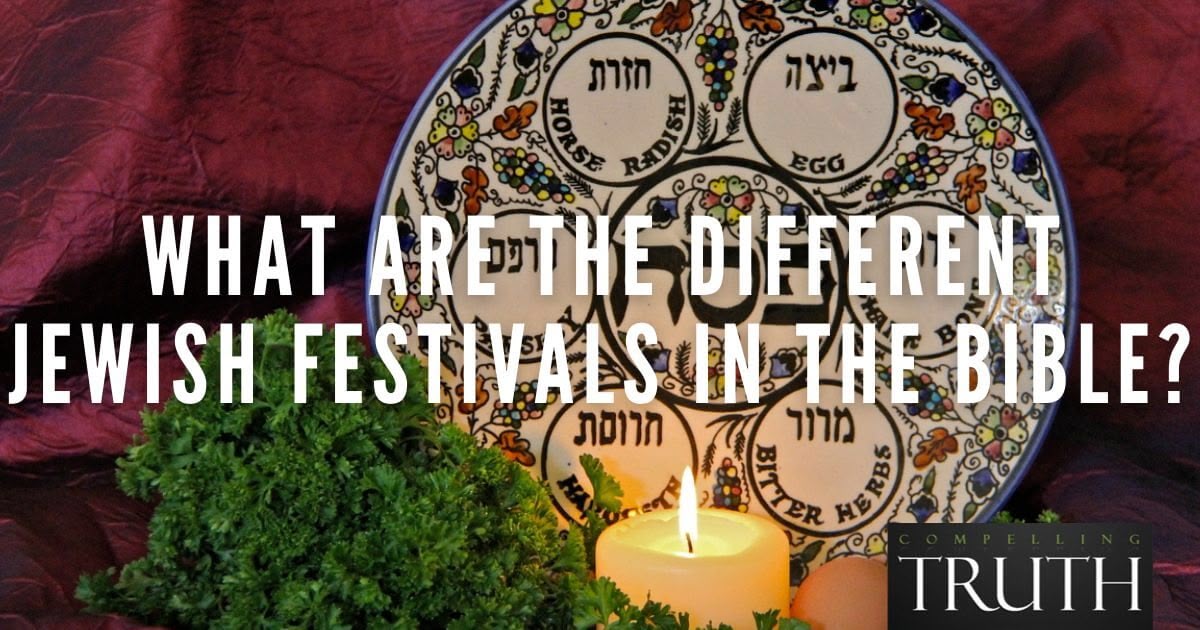The Jewish calendar is a lunisolar calendar that coordinates three astronomical phenomena. The earth rotates on its axis over the course of a day. The moon rotates around the earth over the course of a month, every 29 ½ days. The earth rotates around the sun over the course of a year, every 365 ¼ days or every 12.4 lunar months. The Jewish calendar works to include all three.
The first thing to note is that the Jewish day begins at sundown. In Genesis 1, we learn that the earth began in darkness and God first had to create light. Genesis 1:5 says, "God called the light Day, and the darkness he called Night. And there was evening and there was morning, the first day." Each successive day continues to be recorded in the same order "there was evening and there was morning." So the Jewish day begins at sundown and ends at sundown the following day.
The next thing to know is that the Jewish calendar uses lunar months starting with the first sliver of the "new moon," and lasting either 29 or 30 days. Then each year consists of either 12 or 13 lunar months. A year with only 12 lunar months is 11 days shorter than a solar year, so holidays are celebrated 11 days earlier each successive year. Those holidays would continue to shift earlier passing through all the seasons: winter, fall, summer, spring. In order to prevent this continual seasonal shift, a "leap month" is inserted every few years. In Hebrew these "leap years" are literally called "pregnant years." A 13 month lunar calendar is 19 days longer than a solar year so the holidays are celebrated 19 days later than the year before, thus counteracting the seasonal shift. The leap year schedule runs on a 19 year cycle established by Hillel II in the fourth century where the extra month is added during years 3, 6, 8, 11, 14, 17, and 19. Interestingly, this pattern lines up with the major scale on a piano: for each whole step there are 2 regular years and 1 leap year, and each half step represents only 1 regular year and 1 leap year. The month that gets added is called Adar I and it is inserted before the regular month of Adar (known as Adar II during leap years). Since Adar II is the "real" Adar, all holidays (Purim), birthdays, and anniversaries are celebrated or observed during Adar II.
The Jewish calendar begins with the month of Nissan (in the spring when Passover is celebrated). However, the Jewish New Year (Rosh Hashanah) when the year number increases is not until the seventh month, Tishri. This may seem strange until you consider academic school years often begin in September and businesses run on fiscal years that often begin in July. So the idea of different starting points for different purposes within a calendar is not as foreign as it may seem.
The Jewish calendar numbers the years since creation, believed to be 3761 BC. These year numbers are recorded with A.M. for Anno Mundi meaning "year of the world," rather than BC or AD. Therefore, September 20, 2017 to September 9, 2018 is year 5778 A.M. To determine the Jewish year, simply add 3,761 to the civil year prior to Rosh Hashanah or only 3,760 between Rosh Hashanah and January 1st.
Finally, the first day of the Jewish week is Sunday and the seventh day, known as Shabbat, is on Saturday. So the Jewish weekly calendar is the same as the American one rather than European ones that begin on Monday and end on Sunday. Because of restrictions on certain activities during Shabbat, Yom Kippur should not fall next to Shabbat and the seventh day of Sukkot cannot be on Saturday either. In order to prevent these holidays from interfering with Shabbat, an extra day is added to one month (Cheshvan) or subtracted from another (Kislev) the previous year, a process sometimes referred to as "fixing Rosh Hashanah."
Below is a list of the Jewish months, the number of days in that month, their civil equivalents, and special holidays celebrated during those months:
The first thing to note is that the Jewish day begins at sundown. In Genesis 1, we learn that the earth began in darkness and God first had to create light. Genesis 1:5 says, "God called the light Day, and the darkness he called Night. And there was evening and there was morning, the first day." Each successive day continues to be recorded in the same order "there was evening and there was morning." So the Jewish day begins at sundown and ends at sundown the following day.
The next thing to know is that the Jewish calendar uses lunar months starting with the first sliver of the "new moon," and lasting either 29 or 30 days. Then each year consists of either 12 or 13 lunar months. A year with only 12 lunar months is 11 days shorter than a solar year, so holidays are celebrated 11 days earlier each successive year. Those holidays would continue to shift earlier passing through all the seasons: winter, fall, summer, spring. In order to prevent this continual seasonal shift, a "leap month" is inserted every few years. In Hebrew these "leap years" are literally called "pregnant years." A 13 month lunar calendar is 19 days longer than a solar year so the holidays are celebrated 19 days later than the year before, thus counteracting the seasonal shift. The leap year schedule runs on a 19 year cycle established by Hillel II in the fourth century where the extra month is added during years 3, 6, 8, 11, 14, 17, and 19. Interestingly, this pattern lines up with the major scale on a piano: for each whole step there are 2 regular years and 1 leap year, and each half step represents only 1 regular year and 1 leap year. The month that gets added is called Adar I and it is inserted before the regular month of Adar (known as Adar II during leap years). Since Adar II is the "real" Adar, all holidays (Purim), birthdays, and anniversaries are celebrated or observed during Adar II.
The Jewish calendar begins with the month of Nissan (in the spring when Passover is celebrated). However, the Jewish New Year (Rosh Hashanah) when the year number increases is not until the seventh month, Tishri. This may seem strange until you consider academic school years often begin in September and businesses run on fiscal years that often begin in July. So the idea of different starting points for different purposes within a calendar is not as foreign as it may seem.
The Jewish calendar numbers the years since creation, believed to be 3761 BC. These year numbers are recorded with A.M. for Anno Mundi meaning "year of the world," rather than BC or AD. Therefore, September 20, 2017 to September 9, 2018 is year 5778 A.M. To determine the Jewish year, simply add 3,761 to the civil year prior to Rosh Hashanah or only 3,760 between Rosh Hashanah and January 1st.
Finally, the first day of the Jewish week is Sunday and the seventh day, known as Shabbat, is on Saturday. So the Jewish weekly calendar is the same as the American one rather than European ones that begin on Monday and end on Sunday. Because of restrictions on certain activities during Shabbat, Yom Kippur should not fall next to Shabbat and the seventh day of Sukkot cannot be on Saturday either. In order to prevent these holidays from interfering with Shabbat, an extra day is added to one month (Cheshvan) or subtracted from another (Kislev) the previous year, a process sometimes referred to as "fixing Rosh Hashanah."
Below is a list of the Jewish months, the number of days in that month, their civil equivalents, and special holidays celebrated during those months:
|
Month Nissan (Aviv) Iyar (Ziv) Sivvan Tammuz Av Elul Tishri (Eitanim) Cheshvan Kislev Tevet Shevat (Adar I) Adar (II) |
Number of Days 30 days 29 days 30 days 29 days 30 days 29 days 30 days 29 or 30 days 30 or 29 days 29 days 30 days (30 days) 29 days |
Gregorian Calendar March/April April/May May/June June/July July/August August/September September/October October/November November/December December/January January/February (February/March) February/March |
Holidays Passover (none) Shavuot/Pentecost (none) (none) (none) Rosh Hashanah, Yom Kippur, Sukkot (none) Hannukah (none) (none) (none) Purim |



